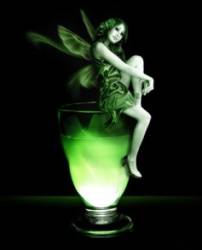This episode is where the No Reservations series all began. Anthony Bourdain heads to the "City of Light" to get to know a little bit about the lives of the city's working class and to show at least the Americans, why the French don't suck. He explores the city's famous catacombs, tries out some absinthe, checks out one of the city's major meat markets, and spends the night in the room where Oscar Wilde passed away.
Introduction:
Paris is the capital and largest city in France, situated on the river Seine, in northern France. An important settlement for more than two millennia, Paris is today one of the world's leading business and cultural centres, and its influences in politics, education, entertainment, media, fashion, science, and the arts all contribute to its status as one of the world's major global cities.
In 2009 and 2010, Paris was ranked among the three most important and influential cities in the world, among the first three "European cities of the future"—according to research published by the Financial Times—and among the top ten most liveable cities in the world according to the British review Monocle Magazine. Paris is the world's most expensive city in which to live. Paris also ranks among the 10 greenest European cities in 2010.
With about 42 million tourists per year, of which 17 million are foreign visitors, Paris is the most visited city in the world. The city and its region contain 3,800 historical monuments and four UNESCO World Heritage Sites.
Demographics:
The history of Paris, spans over 2,500 years, during which time the city grew from a small Gallic settlement to the multicultural capital of a modern European state. Today, Paris is considered to be one of the most beautiful and vibrant cities in Europe. Largely unchanged since 1860, Paris has an estimated population of 2.2 million, but the Paris metropolitan area has a population of 11.8 million, and is one of the most populated metropolitan areas in Europe.
By law, French censuses do not ask questions regarding ethnicity or religion, but do gather information concerning one's country of birth. From this it is still possible to determine that Paris and its metropolitan area is one of the most multicultural in Europe; 37% of all immigrants in France live in the Paris region.
Paris has historically been a magnet for immigrants, hosting one of the largest concentrations of immigrants in Europe today. The first wave of international migration to Paris started as early as 1820 with the arrivals of German peasants fleeing an agricultural crisis in their homeland. Several waves of immigration followed continuously until today: Italians and central European Jews during the 19th century; Russians after the of 1917 and Armenians fleeing genocide in the Ottoman Empire; colonial citizens during World War I and later; Poles between the two world wars; Spaniards, Italians, Portuguese, and North Africans from the 1950s to the 1970s; North African Jews after the independence of those countries; Africans and Asians since then. The Paris metropolitan region or "aire urbaine" is home to some 1.7 million Muslims of all races making up between 10%–15% of the areas population.
French Cuisine:
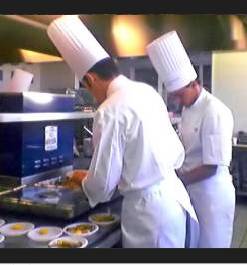 Paris' culinary reputation has its base in the diverse origins of its inhabitants. Over 9,000 restaurants exist in Paris and one can find almost any cuisine. High-quality Michelin Guide rated restaurants proliferate here.
Paris' culinary reputation has its base in the diverse origins of its inhabitants. Over 9,000 restaurants exist in Paris and one can find almost any cuisine. High-quality Michelin Guide rated restaurants proliferate here.
Paris' culinary reputation has its base in the diverse origins of its inhabitants. In its beginnings, it owed much to the 19th-century organization of a railway system that had Paris as a centre, making the capital a focal point for immigration from France's many different regions and gastronomical cultures. This reputation continues through today in a cultural diversity that has since spread to a worldwide level thanks to Paris' continued reputation for culinary finesse and further immigration from increasingly distant climes.
French cuisine was codified in the 20th century by Escoffier to become the modern version of haute cuisine; Escoffier, however, left out much of the regional culinary character to be found in the regions of France. Gastro-tourism and the Guide Michelin helped to acquaint people with the rich bourgeois and peasant cuisine of the French countryside starting in the 20th century. Gascon cuisine has also had great influence over the cuisine in the southwest of France. In November 2010 the French gastronomy was added by UNESCO to its lists of the world's "intangible cultural heritage ".
Episode Recap:
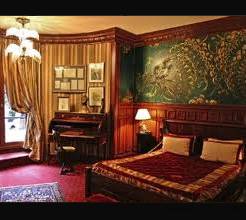 Anthony Bourdain starts off his journey of the "City of Light" waiting an hour at the airport for the guide his French teacher was supposed to set him up with. Anthony eventually writes off his ride as a no-show and hops a cab instead. En route to his hotel, he begins to ponder whether it has anything to do with his poor performance in his French class back in New York.
Anthony Bourdain starts off his journey of the "City of Light" waiting an hour at the airport for the guide his French teacher was supposed to set him up with. Anthony eventually writes off his ride as a no-show and hops a cab instead. En route to his hotel, he begins to ponder whether it has anything to do with his poor performance in his French class back in New York.
L'Hôtel: Anthony stays at the legendary L'Hôtel, one of the Left Bank's most charming boutique hotels. It was once a 19th-century fleabag whose major distinction was that the infamous Irish writer and poet Oscar Wilde died in one of its bedrooms; the same room that Anthony is now staying in—Room 16.
Le Royal Café: Seeking as always to avoid other tourists and do as the locals, Anthony slips into the Le Royal Café for a traditional French breakfast of croissant, café crème (a large coffee with cream), and jus d'orange (freshly squeezed orange juice).
Cantada II: Venturing out for an evening stroll, Anthony happens upon the bar Cantada II in which he runs into Peter, an American who is an artisanal absinthe distiller. They strike up a conversation about absinthe.
Absinthe which historically has been described as a distilled, highly alcoholic (45–74% ABV / 90-148 proof) anise-flavored spirit derived from herbs, including the flowers and leaves of the herb Artemisia absinthium (commonly referred to as "grande wormwood"), together with green anise and sweet fennel. Absinthe traditionally has a natural green color but can also be colorless, thus the reason it' commonly referred to in historical literature as la fée verte (the "green fairy"). Absinthe has been portrayed as a dangerously addictive psychoactive drug.
By 1915, absinthe had been banned in the United States and in most European countries including France. Although absinthe was vilified, it has not been shown that it is any more dangerous than ordinary spirits. Its psychoactive properties, apart from those of alcohol, have been much exaggerated. Revival of absinthe began in the 1990s, when countries in the European Union began to reauthorize its manufacture and sale. As of February 2008, nearly 200 brands of absinthe were being produced in a dozen countries, most notably in France, Switzerland, Spain, and the Czech Republic.
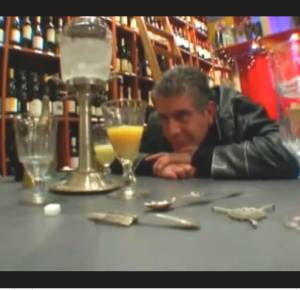 Liquor Store: Peter takes Anthony to a friend's liquor store which happens to have some vintage bottles of the original absinthe, which is still illegal in France; only the newly produced absinthe is now legal. Naturally, this excites bad-boy Tony, so they break open a bottle and the binge, and hallunications, begins. Anthony manages to find his way back to his hotel room. Still intoxicated, as he lies on his bed gazing up at the now psychedelic wallpaper, likely the same Oscar Wilde wrote of, Anthony suddenly recalls that Oscar Wilde was also an absinthe drinker.
Liquor Store: Peter takes Anthony to a friend's liquor store which happens to have some vintage bottles of the original absinthe, which is still illegal in France; only the newly produced absinthe is now legal. Naturally, this excites bad-boy Tony, so they break open a bottle and the binge, and hallunications, begins. Anthony manages to find his way back to his hotel room. Still intoxicated, as he lies on his bed gazing up at the now psychedelic wallpaper, likely the same Oscar Wilde wrote of, Anthony suddenly recalls that Oscar Wilde was also an absinthe drinker.
Les Halles: Anthony visits the site of the old Les Halles, also known as the "belly of Paris".
Les Halles was the traditional central market of Paris. In 1183, King Philippe II Auguste enlarged the marketplace in Paris and built a shelter for the merchants, who came from all over to sell their wares. In the 1850s, massive glass and iron buildings were constructed for which Les Halles became known. Unable to compete in the new market economy and in need of massive repairs, the colorful ambience once associated with the bustling area of merchant stalls disappeared when Les Halles was dismantled in 1971; the wholesale market was relocated to the suburb of Rungis, and replaced with an underground modern shopping precinct, the Forum des Halles.
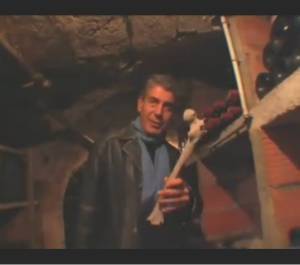 Chez Denise Restaurant: Anthony stops for lunch at at Chez Denise restaurant, a temple of the old-school Parisian bistro dedicated to serving classic blue-collar French dishes like blanquette de veau and desserts like rum baba, untouched by time, in the best possible way. He caps it off with an digestif. The bartender treats Anthony to a tour of their wine cellar, which is quite old and a bit creepy. Apparently the wine cellar was previously used as one of the many Catacombes de Paris.
Chez Denise Restaurant: Anthony stops for lunch at at Chez Denise restaurant, a temple of the old-school Parisian bistro dedicated to serving classic blue-collar French dishes like blanquette de veau and desserts like rum baba, untouched by time, in the best possible way. He caps it off with an digestif. The bartender treats Anthony to a tour of their wine cellar, which is quite old and a bit creepy. Apparently the wine cellar was previously used as one of the many Catacombes de Paris.
Catacombes de Paris: Anthony wanders through this famous underground ossuary in Paris that holds the remains of about 6 million people. Opened in the late 18th century, the Catacombes de Paris became a tourist attraction on a small scale from the early 19th century, and has been open to the public on a regular basis since 1867.
Rungis Market: Still wide awake at 5:30 AM, Anthony decides to explore Rungis Market, the new "belly of Paris". Rungis Market is touted as being "the largest fresh produce market in the world, with 5 worlds (fish, meats, fruit and vegetables, dairy products and flowers) there to discover." Louisa, a fellow American cook working at several 3-star restaurants in Paris, takes Anthony on a tour through the meat market section.
L'Aloyau Restaurant: Louisa and Anthony stop at L'Aloyau restaurant to enjoy a typical breakfast for workers in the meat industry—a sandwich and a glass of wine.
Chez Robert et Louise Restaurant: Anthony checks out Chez Robert et Louise restaurant for a home-cooked French countryside meal. He's joined by his old friend Alex who has just returned from a trip aboard. They feast on boudin noir, a dark-hued blood sausage, containing pork, pig blood, and other ingredients; fromage de tête (head cheese), which isn't actually a cheese but a meat jelly or terrine made with flesh from the pig's head, and often set in aspic; and cote de boeuf (beef rib steak) with potatoes sautéed in goose grease.
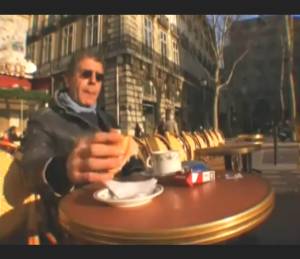 Pascal Pinaud Boulangerie & Patisserie: Anthony finds himself wide awake and wandering the streets hungry at 3 AM. Fortunately, he finds a bakery that's open and witnesses the early-morning routine of the bakers at Pascal Pinaud Boulangerie & Patisserie. Hordes of loyal customers come early, eagerly awaiting the arrival of the piping-hot baguettes and assortment of other French breads and breakfast pastries fresh from the oven.
Pascal Pinaud Boulangerie & Patisserie: Anthony finds himself wide awake and wandering the streets hungry at 3 AM. Fortunately, he finds a bakery that's open and witnesses the early-morning routine of the bakers at Pascal Pinaud Boulangerie & Patisserie. Hordes of loyal customers come early, eagerly awaiting the arrival of the piping-hot baguettes and assortment of other French breads and breakfast pastries fresh from the oven.
Street Corner Cafe: Anthony sits outside and enjoys a café crème and a ham sandwich, made using a baguette. He contemplates this popular Parisian past time and simple pleasure, and how, unlike many English-speaking people, the French see food as being good, important, and worth waiting for and spending time with. He proposes that we Americans should learn to do the same, and perhaps we'll discover that we not only love the French again, but we may also love life and, ultimately, the world.
Episodes:
 |
ARGENTINA: From the Tango to paragliding to cattle rustling to trekking along icy glaciers, Anthony experiences it all. |
 |
AUSTRALIA: Melbourne has been described as San Francisco without the fog. Anthony is off to discover what makes it so special. |
 |
BERLIN: Anthony finds himself in Berlin, a city that is for him both good and evil, Eastern and Western, repulsive and appealing. |
 |
BRAZIL: Some say São Paulo feels like LA threw up on NYC. But Anthony's back for the great food and its welcoming people. |
 |
CALCUTTA & BOMBAY: Anthony revisits his love for India's vibrant culture, cuisine & communities with a trip to Kolkata & Mumbai. |
 |
COLOMBIA: A bright and beautiful country that has gone from drug capital to food capital. Anthony explores its unique cuisine. |
 |
EGYPT: Anthony skips the long lines and tour buses, and visits with Egyptian locals to get a taste for what it means to be Egyptian. |
 |
GHANA: Anthony heads to Ghana, West Africa, a land of old forts and slave castles, and a culture filled with great food and music. |
 |
GREEK ISLES: Anthony is on a culinary odyssey to discover if Greece really does have the world's healthiest diet. |
 |
HONG KONG: A wonder-land of colors, lights and speed, a perfect marriage of modern and traditional, and home to great Asian cuisine. |
 |
IRELAND: Ireland's steeped in history and traditions, both oral & written. Anthony dispels the myths that it has the worst food on the planet. |
 |
JAMAICA: Jamaica is a vibrant, colorful land full of resorts and reggae music. Anthony is there to uncover the lesser-known Jamaica. |
 |
KOREA: Anthony gives in to his employee's pressure to visit Korea and, next thing you know, they're in Seoul and the adventure begins. |
 |
MEXICO: Carlos, a head chef in NYC and good friend, gives Anthony a culinary tour of his hometown Puebla and nearby Mexico City. |
 |
OSAKA (Japan): Anthony learns all about kuidaore, which means to bankrupt oneself with extravagance in food and drink! |
 |
PERU: Anthony is on a mission to obtain personal enlightenment in a land of ancient culture, rich cuisine, and vibrant people. |
 |
QUEBEC (Canada): Anthony is off to Québec to indulge in one of his most hedonistic pleasures–foie gras (fatty duck liver). |
 |
RAJASTHAN (India): From gorgeous sights to enticing smells, Anthony explores the magical and delicious offerings of Rajasthan. |
 |
ROME: Anthony adopts the mindset of the Roman people–living a simple life and eating fresh, seasonal ingredients. |
 |
RUSSIA: Anthony explores Russia, where the food is hearty. Along the way he meets a former Cold War spy and Miss Russia. |
 |
SHANGHAI (China): Anthony is back in China. From Shanghai to Tibet, he searches for the mythical Shangri-La. |
 |
SICILY: Anthony starts his gastronomic tour through Sicily in style by sharing a spleen sandwich with Sicily's president. |
 |
SINGAPORE: Singapore is serious about food and offers up a cuisine like no other. Anthony dives in head-first. |
 |
SPAIN: According to Anthony, outside of Asia, Spain is the single greatest place for culinary achievement in the world. |
 |
TOKYO: Anthony is off to Tokyo in search of the relationship between a perfect piece of sushi and a perfect knife blade. |
 |
TUSCANY: Anthony travels to the beautiful Tuscan countryside to visit with friends and enjoy some homemade pasta that's out of this world. |
 |
URUGUAY: Anthony and his brother are on a mission to connect with their roots in Uruguay after learning that Bourdains once settled here. |
 |
VANCOUVER (Canada): Anthony visits Vancouver, home to a thriving film industry, gorgeous scenery, and an evolving food scene. |
Contact Us | Shop | Sitemap | Join Our Team | Investors | Advertise | Web Design Services
Community | Foodies' Choice | Meetup Groups | Chat | Blogs | Forums | Submit Your Site | Resources
